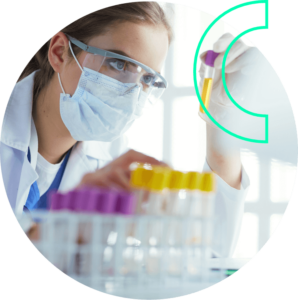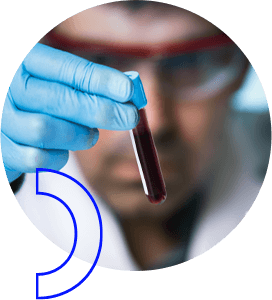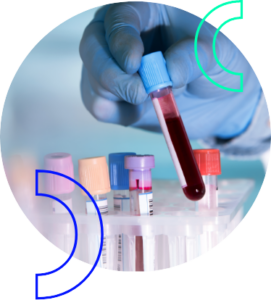Cell and gene therapy
Cell and Gene Therapy
Cell and Gene Therapy is a family of therapeutic options that is experiencing rapid growth and acceptance both from regulators and clinical practitioners. Its benefits in terms of clinical efficacy and long-term health have made it an attractive choice for a wide range of congenital or acquired disorders such as hematological or solid tumors, autoimmune diseases or genetic diseases.
While Cell Therapies involve repairing or replacing damaged cells or tissues by transferring living cells as “living drugs” to the damaged tissue, Gene Therapies introduce, remove or modify the genetic material of the patient to regulate or alter the expression of target genes or influence regulatory activity at a genomic level.
Therapeutic Strategies in Cell and Gene Therapy
The choice of a therapeutic strategy to be adopted largely depends on the nature of the disorder to be treated (congenital or acquired), the available technologies, the immune status of the patient or the immunological risk of the individual solutions, and is intimately related with the kind of challenges in logistics and economies of scales expected for the treatment of the particular disease.
Although the unique combination of technologies and therapeutic strategies developed in the field of Cell and Gene Therapy greatly surpasses traditional Small or Large molecule approaches in terms of flexibility and efficiency, challenges in establishing complex yet robust manufacturing and logistics processes as well as navigating the regulatory landscape still remain to be solved by researchers and manufacturers on a case-by-case base and find limited consensus throughout the industry.
In the following paragraphs, we present the main therapeutic strategies employed in Cell and Gene Therapy and their implications.
Allogenic or autologous Cell Therapies?
Allogenic strategies involve the isolation of cells from a single donor and their use for treatment of several patients usually after an expansion step. While this approach potentially poses immune-related risks in case donor and recipient are not HLA (human leukocyte antigen)-matched, it constitutes an attractive option for Cell Therapy developers, as it has the potential of better exploit economies of scale, lowering logistics and manufacturing costs.
Autologous strategies involve on the the other hand the isolation of cells from the patient to be treated and their re-infusion after expansion or modification into the same patient. While this approach poses only low immunogenicity or graft-versus-host disease risks, the difficult logistics related to the isolation, individual processing and re-infusion of the patient’s material, the variability of the starting material and the small production scale lead to higher development and commercialization costs.
As the previous considerations apply also to ATMPs such as CAR-T cell therapies, these novel strategies will here be discussed as similar to Cell Therapies.
CELL THERAPY STRATEGY
So, how to choose the optimal Cell Therapy strategy?
Asking yourself the following questions may help identifying it:
Viral or non-viral Gene Therapies?
Gene Therapies aim at altering the genetic material of individual cells by regulating, repairing, replacing, adding or deleting a genetic sequence of the cell to be treated in order to correct a genetic or epigenetic disorder.
The alteration of the genetic material can be performed by directly delivering the therapeutic agent to the target cells inside the patient’s body (in vivo) or by isolating the target cells from the donor or patient, genetically altering them and reintroducing into the patient (ex vivo). While in vivo strategies are usually performed by using viral vectors and their ability to enter cells and deliver genetic material (transduction), ex vivo strategies enjoy more flexibility in the choice of method and allow, in addition to viral vectors, for the manipulation of the genetic material with non-viral methods such as:
Electroporation
Nucleofection
Cationic
Liposomes
Polymers
Anorganic nanoparticles
Laser irradiation
Magnetoporation
Ultrasound
Developing your Cell and Gene Therapy with BIOMEX
Developing a Cell or Gene therapeutic strategy requires a careful consideration of the particularities of the disorder to be treated, the accessibility of the target tissue and the economic aspects related to the logistics and economies of scale of the development, manufacturing and ongoing personnel training.
During the preclinical and clinical development stages you will need a reliable and flexible partner able to react to changes in your demand and consistently delivering on your plans, enabling a smooth transition from development to commercialization.
If you are interested to know how BIOMEX can support in development, pipeline de-risking and manufacturing of your Cell and Gene Therapies, book a free consultation session!
Our Experts for Life Sciences
Unlock the potential of your research with our high-quality biospecimens and expert services. At BIOMEX, we believe that working with our customers is the best way to improve project success and reduce costs and development time.


